
When I started researching the Ann McCallum Books website to gauge my interest for this review, I fell in love with the different "Eat Your...Homework" books. I was so very much hoping that they would be among the choices for our review. These seemed like they would fit in great with our homeschool, seeing as we do like to spend fun learning time in the kitchen. I was thrilled when I found out we were going to receive my top choice, Eat Your U.S. History Homework. Our main curriculum focuses on American History this year and I just knew this would make a great supplement.
Eat Your U.S. History Homework: Recipes for Revolutionary Minds is written by Ann McCallum and illustrated by Leeza Hernandez. This 48 page hardcover book contains six different recipes to help children (and parents) bring different periods in our country's history to life. Before you get to the recipes, you will find both an Introduction and a Kitchen Tips section. In the back of the book there is a History Review, a Glossary, and an Index.
Now, there is a lot more to this book than just recipes in each section. Before you get to the recipe, you will find a page that is chock full of background information about the time period you will be focusing on.
After reading this intriguing information, it is time to try out the recipe. The information you will need to make the dish is there on the double page spread.
- "Before You Begin" which gives important information such as how long it will take to make, what the oven needs to be set at, what the yield (or servings) will be, and the difficulty level.
- "Equipment" tells you what kind pans, bowls, and utensils
- "Ingredients" lists the needed ingredients with amounts
- "Method" tells you how to make the dish, using text and pictures. The steps are easy to follow.
Each section then gives some more educational information and ends with a "Side Dish" of thought-provoking trivia that concludes with some questions for the reader to think about.
This book will take you and your children from the time of the Pilgrims in 1620 through the American Revolution. The following are the six time periods that are focused on:
- The Pilgrims at Plymouth, 1620
- The Thirteen Original Colonies, 1607-1776
- The French and Indian War, 1754-1763
- Slaves and the Southern Plantation, 1619-1863
- The American Revolution, 1775-1783
- The Declaration of Independence, 1776
I'm sure you are curious to know what kinds of yummy foods you will be able to make with your children for each of these time periods. Let's take a look (you should be able to tell which dish goes with which time period above, just by their names, but I have kept them in order anyway):
- Thanksgiving Succotash
- Colonial Cherry-Berry Grunt
- Lost Bread
- Southern Plantation Hoe Cakes
- Revolutionary Honey-Jumble Cookies
- Independence Ice Cream
We received this book at just the right time, as we were learning about the pilgrims. The information in the story helped to reinforce what we had already learned. We then looked at the recipe ingredients and instructions in order to discuss how we would make it. This was our Kids and a Mom in the Kitchen time for that particular week. We actually made the Thanksgiving Succotash as a side dish to go with our pork chops. I also looked up a recipe for Stovetop Cornbread, which the children helped to make as well.
Harold and Hannah helped daddy make the succotash.
Tabitha and Amelia were helping me make the cornbread to go with the succotash.
In case you are wondering, yes there are hot dogs in the succotash. I found that a bit weird (for lack of a better word) seeing as there were no such things as hot dogs in 1620. I would have loved for it to be a bit more authentic.
After we made and ate the Thanksgiving Succotash, we then read the additional information for the time period. For this "Side Dish" we had to think about what food items in our fridge wouldn't have been available for the pilgrims.
During the review period we were also able to make one other recipe. We moved on to the Colonial period, so we had a chance to try the Colonial Cherry-Berry Grunt. In case you are wondering about the strange name, according to the book, it got its name "from the sound of the fruit as it bubbles on the stove." The information about the time period also mentions that the colonists did a lot of "grunting and groaning" as they tried to survive here in America. Today, we would call this a cobbler. I have to confess, the children liked this recipe a whole lot better than the succotash (lima beans and peas are NOT their favorite by a long shot).
During the review period we were also able to make one other recipe. We moved on to the Colonial period, so we had a chance to try the Colonial Cherry-Berry Grunt. In case you are wondering about the strange name, according to the book, it got its name "from the sound of the fruit as it bubbles on the stove." The information about the time period also mentions that the colonists did a lot of "grunting and groaning" as they tried to survive here in America. Today, we would call this a cobbler. I have to confess, the children liked this recipe a whole lot better than the succotash (lima beans and peas are NOT their favorite by a long shot).
We are looking forward to using all of these recipes over the next few months as we make our way through early American history. We love hands-on learning, and making food related to our lessons is the best hands-on of all. At least we think it is. I love that the author wanted to make "edible connections to American history."
I have to say, I hope there are plans to write another book that will look at American history after the American Revolution. I didn't realize this book only went through the late 1700's, so I admit, I was a little disappointed to only find 6 time periods/recipes in a 48 page book. I would have loved to have been able to make more than one recipe per time period as well.
One other thing that caught me off guard was the lack of direction on how high to set the burners for the recipes that are cooked on the stove top. I am not a beginner when it comes to cooking, but I do a lot better with specific instructions. I'm sure for some people, it is intuitive to know to set the burner on high, medium, or low. I on the other hand, wasn't sure. Thankfully our succotash cooked without incident. The cherry filling at the bottom of the grunt did get a bit burnt. I was very thankful that it washed right off though.
This is a fun book to help bring history alive in your homeschool. If you enjoy spending time with your children in the kitchen, I definitely recommend this book. It has bright, silly pictures of rabbits helping to make the foods and teach the lessons, which is appealing to young children. I love that the pictures are included for how to follow the recipe instructions. That is very helpful for young children who want to help but aren't reading yet.
I also discovered that an downloadable Educator's Guide is available for this book on the Eat Your U.S. History Homework page of the Ann McCallum Books website. There are fun learning activities for each recipe.
Don't forget to click on the banner below to stop by and check out my fellow Crew Mates' reviews. Besides Eat Your U.S. History Homework, there were 2 other books in this series that were reviewed. They are Eat Your Science Homework and Eat Your Math Homework. Rabbits, Rabbits Everywhere: A Fibonacci Tale and Beanstalk: The Measure of a Giant were also reviewed.

























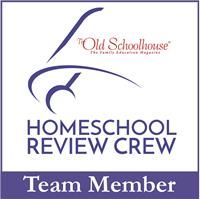
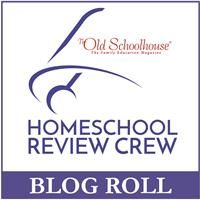













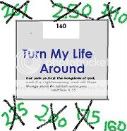
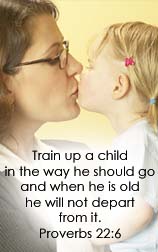



![[PREMIO2009.png]](https://blogger.googleusercontent.com/img/b/R29vZ2xl/AVvXsEjXD_Gx-wZ9EM5hXKrEYLksEBkYfRQtmb8VDVTDG_yyLggQoFIstZsh4zszdG20KqErZicRzEhiNYLty7j3IMXJYsABqkXjr8pp-ncj71xCbpxlXGbGpZq2fTuDQqq1RMKV4DPcDBnBViA/s1600/PREMIO2009.png)
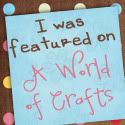
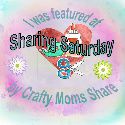


Lovely post, I like how everyone helps to make dinner :)
ReplyDeleteWhat an ingenious concept! Great way for kids to relate to US history! Yum!
ReplyDelete